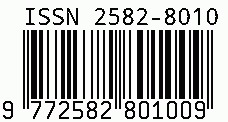
International Journal of Leading Research Publication
E-ISSN: 2582-8010
•
Impact Factor: 9.56
A Widely Indexed Open Access Peer Reviewed Multidisciplinary Bi-monthly Scholarly International Journal
Plagiarism is checked by the leading plagiarism checker
Call for Paper
Volume 6 Issue 4
April 2025
Indexing Partners



















AI-Generated Malware Detection in Web Applications De-Obfuscation and Analysis
| Author(s) | Sandeep Phanireddy |
|---|---|
| Country | United States |
| Abstract | Web applications face evolving threats as attackers employ advanced techniques including AI driven malware and code obfuscation to infiltrate servers and client interfaces. Malicious scripts can hide behind seemingly benign code, making conventional signature-based methods insufficient. This paper discusses how artificial intelligence (AI) models identify and de-obfuscate malicious code in modern web platforms. We explore established and emerging techniques, covering static and dynamic analysis, advanced machine learning (ML) classification, sample formulas for detection thresholds, and recommended architecture. By highlighting practical tools and frameworks, this paper offers a roadmap for developers and security teams aiming to protect critical web assets from stealthy malware attacks. |
| Keywords | Malware Detection, AI, De-obfuscation, Web Application Security, Machine Learning, Code Analysis, Obfuscated Scripts |
| Field | Engineering |
| Published In | Volume 1, Issue 4, December 2020 |
| Published On | 2020-12-08 |
| Cite This | AI-Generated Malware Detection in Web Applications De-Obfuscation and Analysis - Sandeep Phanireddy - IJLRP Volume 1, Issue 4, December 2020. DOI 10.5281/zenodo.14960419 |
| DOI | https://doi.org/10.5281/zenodo.14960419 |
| Short DOI | https://doi.org/g86v5b |
Share this


CrossRef DOI is assigned to each research paper published in our journal.
IJLRP DOI prefix is
10.70528/IJLRP
Downloads
All research papers published on this website are licensed under Creative Commons Attribution-ShareAlike 4.0 International License, and all rights belong to their respective authors/researchers.

